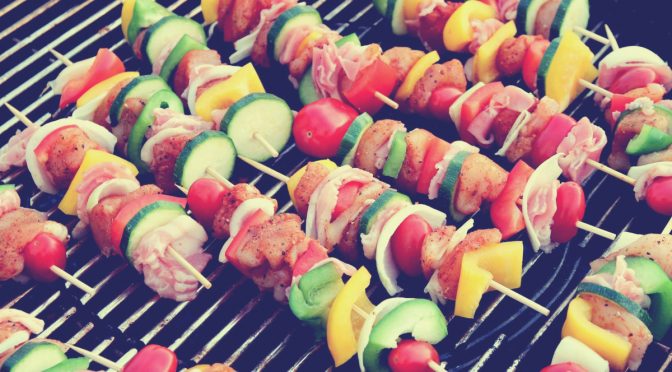
It’s Fall here in Reno, and it’s welcome as this is my favorite time of year. I love watching the trees turn, attempting to salvage any pears from my tree before the birds get them, and tasting all the wonderful flavors that come with the season. Pumpkin is back in all the restaurants, but there are other fantastic seasonal squashes coming up as well. I plan to be experimenting with more new recipes over the next few weeks, so look for that.
In the meantime, I spent most of September in Las Vegas house/dog sitting for my friends who jetted off to their home they are renovating in France. Sounds so posh, doesn’t it? The house in the country in France. I may even get over to see it when they are completely through with the massive renovation. Anyway, I didn’t do much creative cooking while I was there, keeping mostly to the basics and trying to get my body reset to a tight low carb diet. However, I did experiment a little with this wonderful recipe for an Italian Ricotta Cream Cheesecake. It is adapted for a smaller cake and I use sugar-free lemonade mix in it to give it a very lemony flavor that is sensational. As a bonus, I created it in both a baked form, and as a quick microwave version that serves two. Both are delightful.
Italian-Style Lemonade Ricotta Cheesecake
Adjusted to low carb and adapted from the original recipe by Rene Averett. Find the original at All Recipes.
6 oz. Cream Cheese
1/3 cup Ricotta Cheese
1/2 cup plus 1 tablespoon Sugar Substitute
2 Eggs
2 teaspoons Sugar-free Lemonade mix
1/4 teaspoon Vanilla Extract
2 tablespoons Low Carb Flour
3 tablespoons Butter, softened
1/2 cup Heavy Cream or Sour Cream
Preheat oven to 350 degrees (F.) Cut a piece of parchment paper to fit a 6″x6″ cake pan and spray with cooking spray.
In a medium mixing bowl, combine the cream cheese and ricotta cheese until well mixed. Add the sugar, eggs, lemon mix, vanilla, flour, and butter. Mix until smooth and creamy. Stir in the heavy cream or sour cream last.
Pour the mixture in the cake pan and smooth.
Bake in the preheated oven for 45 minutes. Turn off the oven and leave for another 30 minutes. Cover with plastic wrap and place in the refrigerator to cool before serving.
Place a plate over the top and flip the cheesecake onto the plate. Cut into six slices. Tastes delicious with a tablespoon of sugar-free strawberry jam on top or top with whipped cream.
Makes six servings.
Nutrition information per serving:
Calories: 272.8 Fat: 26.8 g Net Carbs: 2.6 g Protein: 6.7 g
Microwave Lemonade Ricotta Cheesecake
2 oz. Cream Cheese
2 tablespoons Ricotta Cheese
1/4 cup plus 1 teaspoon Sugar Substitute
1 Egg
3/4 teaspoon Sugar-free Lemonade mix
1/8 teaspoon Vanilla Extract
1 tablespoon Low Carb Flour
1 tablespoon Butter, softened
2 tablespoon Heavy Cream or Sour Cream
In a small bowl, mix cream cheese and ricotta cheese together, blending as much as possible. Stir in the sugar, egg, lemonade mix, vanilla, and butter. Mix well, then add the flour and cream. Stir until mixed in.
Spoon 1/2 of the batter into a microwave safe 1/2 cup ramekin, then spoon the rest into another one. Put one ramekin in the microwave and cook for 30 seconds. Remove and stir the batter to smooth any lumps from it. Put back in the microwave and cook another 40 seconds. Check to make sure the cake is baked all the way through. If not cook, another 15 seconds.
Repeat baking with the second ramekin. Once cooked, cover both with plastic wrap and put in the refrigerator to chill for a few hours. Serve in the ramekin.
Makes two servings:
Nutrition Information per serving:
Calories: 276.4 Fat: 26.4 g Net Carbs: 2.8 g Protein: 8.1 g
I hope you try this and love it as much as I did. I took the photos in Las Vegas and had to adjust to available cooking pans, but I hope to make it again soon and will get better photos then.





